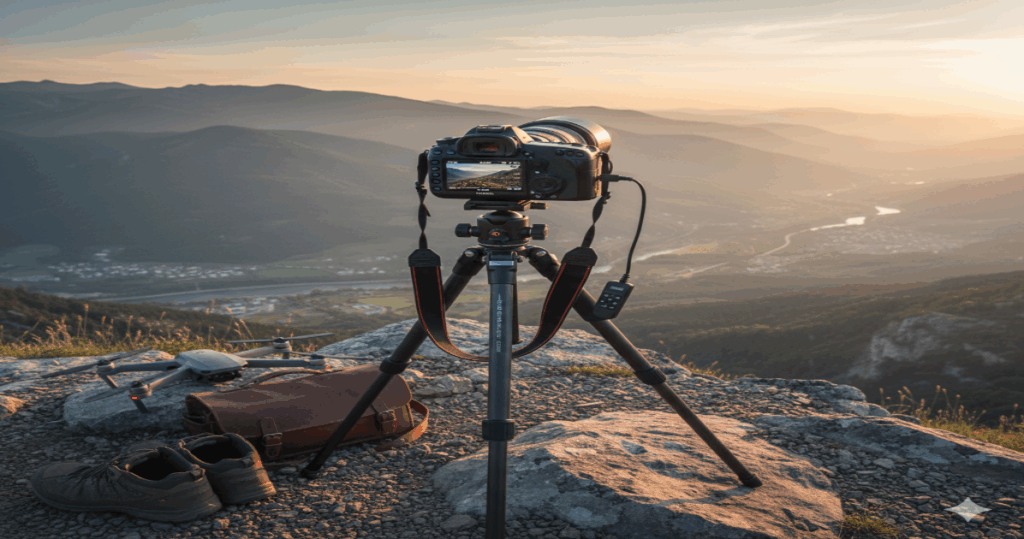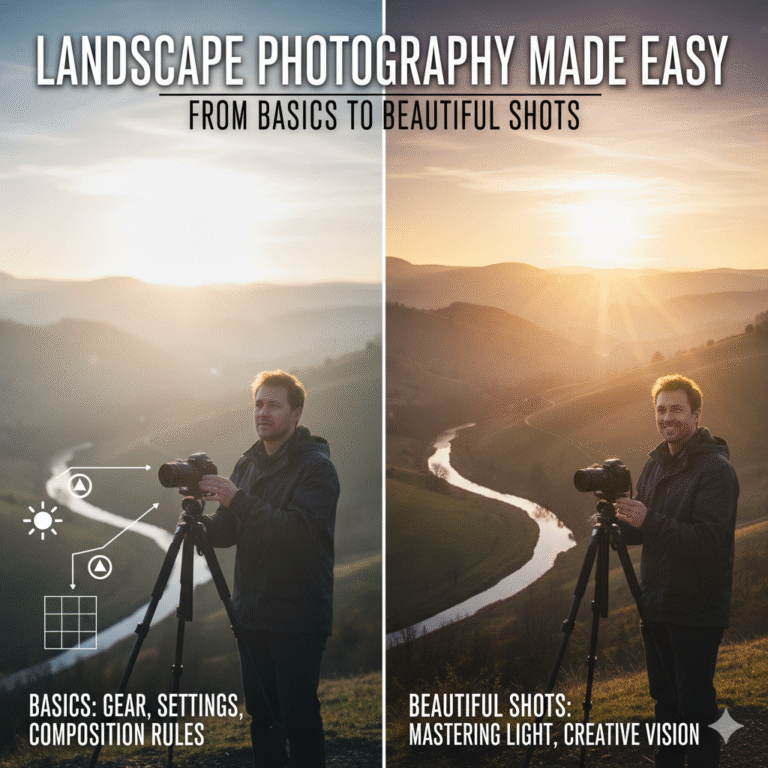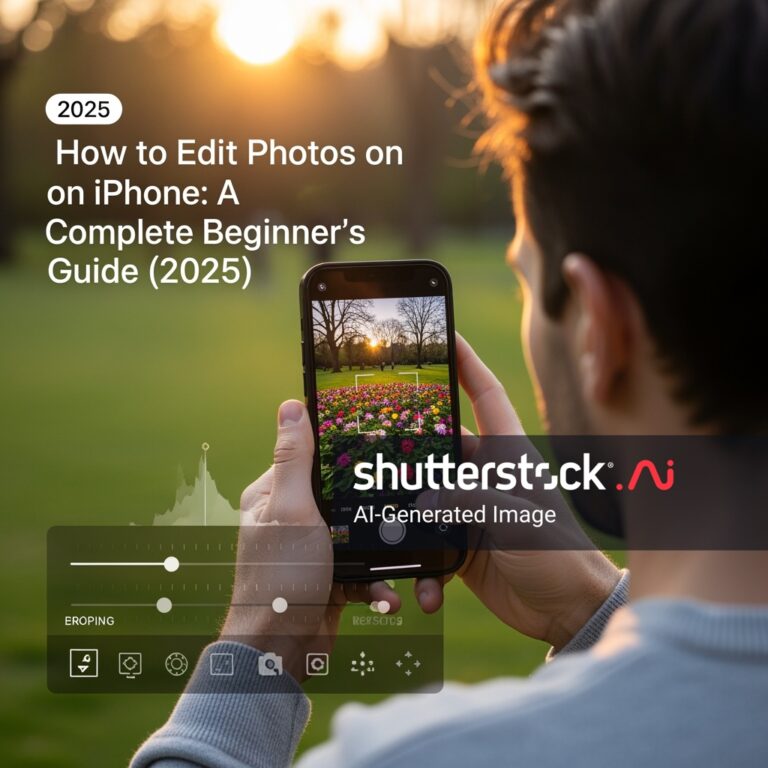Overview
Photography is an art form that enables us to record memories, tell stories, and capture emotions. It’s more than just pressing a button. With the advent of high-end cameras, AI-powered editing software, and sophisticated smartphones, photography is now more accessible than ever in 2025. This guide will help you become an expert at capturing amazing moments, regardless of your level of experience.
Recognising the Fundamentals of Photography
Fundamentally, photography is about taking a new look at the world. It teaches you to look for emotion, texture, and light in each frame. Understanding three key components—lighting, composition, and timing—is essential to excellent photography. While appropriate composition guarantees that your viewer’s attention remains on the subject, natural light has the power to turn an ordinary scene into something magical. Capturing those brief, memorable moments that characterise true artistry is made possible by good timing.
Acquire Knowledge of the Fundamental Camera Settings
The exposure triangle, which consists of ISO, shutter speed, and aperture, is a concept that a competent photographer must understand.
- Aperture influences depth of field and regulates the amount of light that enters your lens.
- The way motion is captured depends on the shutter speed; slower shutter speeds produce motion blur, while faster shutter speeds freeze action.
- ISO modifies how sensitive your camera is to light.
You can take crisp, perfectly exposed photos by balancing these three settings. You will have complete creative control over your photography once you understand this.

Selecting Appropriate Equipment
In 2025, technological advancements have reduced the cost and improved the usability of professional photography equipment. Even contemporary smartphones can take high-quality pictures, so you don’t have to start with the priciest camera. Nonetheless, it makes sense to invest in a mirrorless or DSLR camera if you intend to advance in this industry.
A good lens is worth more than an expensive body. Wide-angle lenses work well for landscape photography, while a 50mm prime lens is ideal for portraiture for novices. Remember that accessories like an external flash, reflector, and tripod can significantly enhance the quality of your photos.
Developing Your Photography Skills
Professional photographers are distinguished from amateurs by their techniques. Applying the rule of thirds will help you produce images that are harmonious and visually appealing. Try experimenting with framing, symmetry, and leading lines to give your images more depth and originality. To discover unusual angles, try crouching, tilting, or shooting from above.
Additionally, get comfortable taking pictures during the golden hour, which is the time just after sunrise or before sunset when natural light gives your pictures a cosy, gentle glow. Your skills will become more automatic the more you practise.
Examine Various Photographic Styles
There are countless styles to choose from in the varied art of photography. You could try:
- Capturing human emotions and expressions through portrait photography.
- Photographing landscapes allows one to appreciate the splendour of the natural world.
- Street photography is the art of capturing ordinary moments to tell true stories.
- Food and product photography is ideal for branding and social media.
- Photographing wildlife allows one to capture the unadulterated nature of the animal kingdom.
Technology’s Ascent in 2025
Technology has ushered in a new era of photography. These days, photo enhancement is quicker and more accurate thanks to AI-powered editing programs like Adobe Sensei and Luminar Neo. While 360° cameras provide immersive experiences, drone photography enables creators to capture amazing aerial views. Computational photography, which automatically modifies lighting and sharpness for results that look professional, is now available on smartphones. These developments enable both novices and experts to reach new levels of creativity.
Post-processing and editing
A key component of photography that makes your photos come to life is editing. For a polished look, post-processing aids in adjusting composition, lighting, and colour. Filters, exposure correction, and clarity enhancement are all made possible by programs like Adobe Lightroom, Photoshop, and Snapseed. Moderation is essential, though, as the aim is to make images appear captivating and natural rather than staged.
Developing a Career in Photography
There are countless career options in 2025 if photography is more than just a pastime for you. You can open your own photo studio, work as a freelance photographer, or sell your photos online via stock photo marketplaces. Social media sites like Behance, Pinterest, and Instagram are excellent for expanding your clientele and portfolio. A successful photography career is built on a foundation of creativity, networking, and consistency.
In conclusion
A beautiful journey of imagination, perseverance, and lifelong learning is photography. Every camera click is an opportunity to capture a moment in time, elicit a feeling, or tell a story. There has never been a better moment to follow your passion for photography than in 2025, when you have access to an infinite number of tools, technologies, and opportunities. Remember that every picture you take expresses a different aspect of your own worldview, whether it’s the chaos of a busy street, the serenity of a sunset, or the smile of a loved one.





